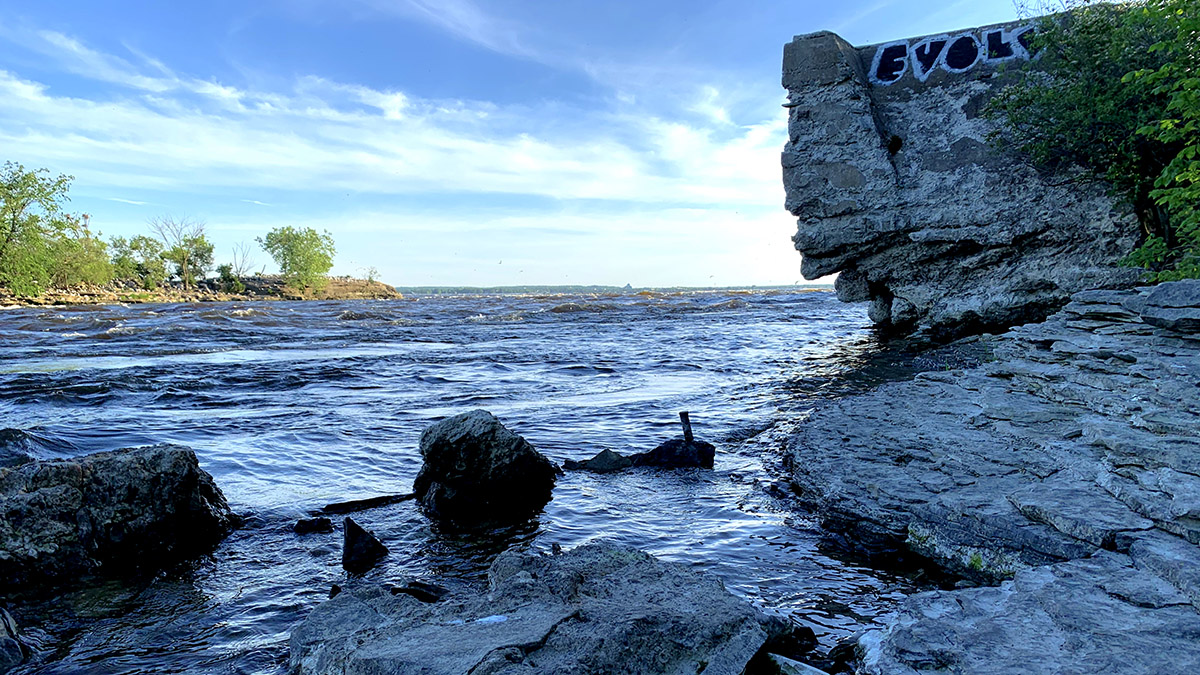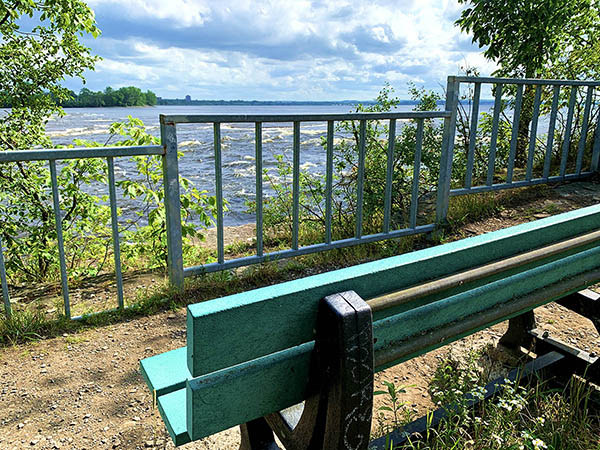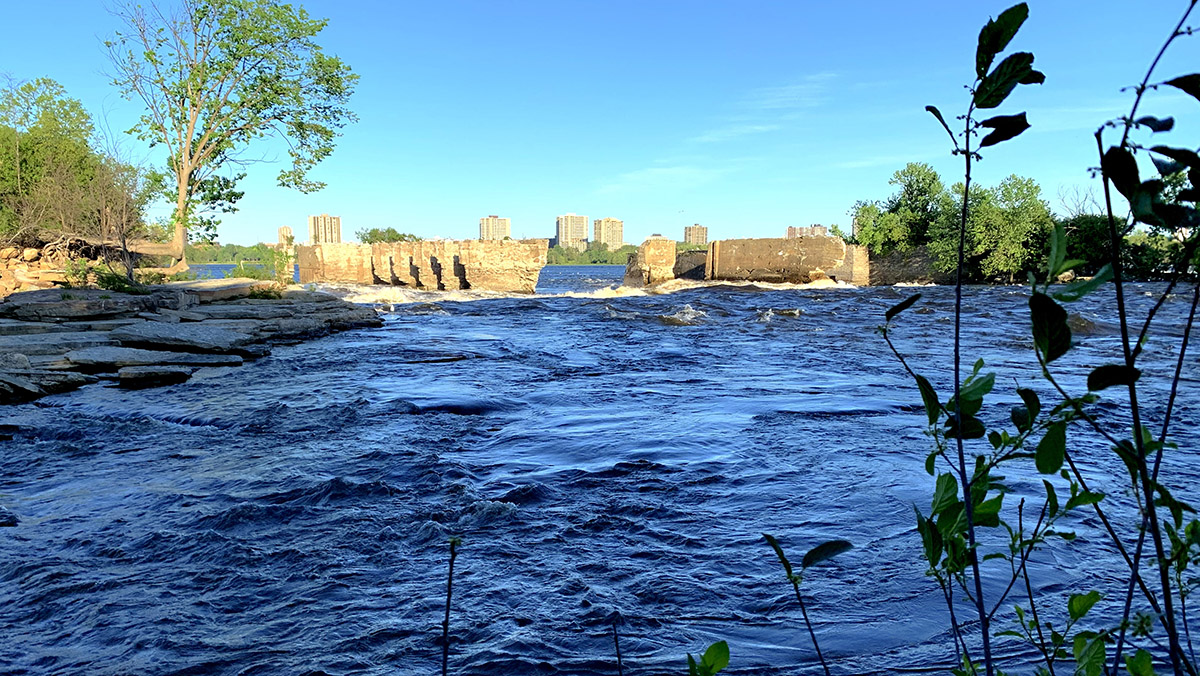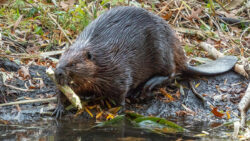A decision by the Quebec Transport department to remove the Aylmer Hydro Ruins in the Ottawa River will harm the local community’s heritage and ecosystem, critics say.
The ruins of a hydroelectric dam built in 1895 are located between Conroy Island and the shore. Quebec Transport says they are too dangerous to leave in place, despite their community and historical value.
Lynne Rodier, vice-president of the Deschênes Residents’ Association in Gatineau, challenges the government’s argument, saying that it is factoring in incidents outside the ruins between Conroy Island and the Ottawa side of the river.
“Even 4,000 years ago, they understood that you couldn’t go and play in that part of the rapids because the water was too turbulent,” said Rodier. She says other solutions should be explored including warning signs and improving safety measures along the shore.
“If they have to drain the river, then the island and its birds are at risk.”
Jean-Marc Emery, president of the Outaouais Ornithologist Club
The Aylmer Hydro Ruins are enjoyed by anglers and birders to whitewater kayakers. But for Rodier, a historian, the remains of the area’s first hydro dam are a reminder of the community’s industrial past.
“The ruins are very important to the community and getting to know their history brings people together,” she said.
This is why she and other community leaders have pushed to have the ruins declared a heritage site for more than a decade.
In May, Gatineau Coun. Caroline Murray began a petition to protect the ruins, a move supported by the Liberal MNA for Pontiac, André Fortin, the Deschênes Residents’ Association and the Aylmer Heritage Association. Though it received more than 1,000 signatures, it failed to sway the government.

Not only will removing the ruins be a loss for the community’s heritage, but experts say it could have severe ecological consequences, especially since the tender documents call for that portion of the river to be drained.
The section of the Ottawa River is an important bird site, with 266 species nesting along the shore and on Conroy Island year-round. Many are migrant species protected by federal and provincial law.
Jean-Marc Emery, president of the Outaouais Ornithologist Club, warns that any work done on and around the ruins will harm birds and their habitat.
“We know that the island is upstream of the ruins, but if they have to drain the river, then the island and its birds are at risk,” Emery said. “If humans or predators could have access to Conroy Island, the effects on birds would be dramatic.”
Many of these birds feed among the ruins and any work will harm them and the water quality, which, he says, could also affect food availability for birds downstream.
“We are worried, and we hope … no action will be taken that could negatively affect birds and their habitat,” Emery said.
“Works in Canadian waters which might negatively impact fish habitat have to be authorized under the fish habitat provisions of the Fisheries Act,” he said. “I imagine a fairly significant and rigorous review process would be needed for the rapids demolition project.”

Jacinthe Le Sage, a local nature enthusiast who holds wildlife observation workshops, says the Quebec government should consider how this is going to affect wildlife and humans in the future.
“Wildlife is very sensitive to changes in the environment, whether it’s birds, mammals or insects, you could be changing their ability to feed and to reproduce,” she said. “And everything is interconnected — if you disturb one piece of the chain, it weakens the rest.”
Le Sage urges the government to listen to the science. “If the science says that it’s better to leave it there for the birds, to prevent pollution, for the tourists, for heritage, then just leave it,” she said.
Each of these experts is calling for a thorough environmental analysis before any work moves forward. Meanwhile, Rodier says she will keep fighting to preserve this part of her community’s heritage.
“It’s a beautiful site and it’s worth investing in to make sure people can have access for a long time,” she says. “We don’t want to lose that special place.”




